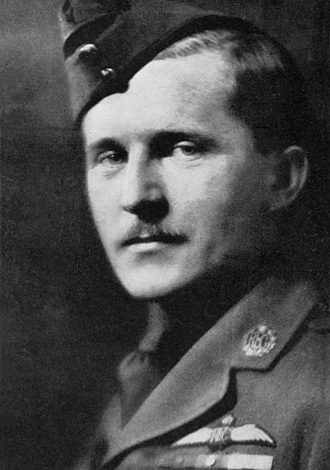Billy Bishop

William Avery Bishop, VC, CB, DSO & Bar, MC, DFC, ED (8 February 1894 – 11 September 1956) was a Canadian flying ace of the First World War.
He was officially credited with 72 victories, making him the top Canadian and British Empire ace of the war. He was an Air Marshal and a Victoria Cross recipient.
During the Second World War, Bishop was instrumental in setting up and promoting the British Commonwealth Air Training Plan.
Bishop was born in Owen Sound, Ontario.[2] He was the third of four children born to William Avery Bishop Sr. and Margaret Louisa (Green) Bishop.[3] His father, a lawyer and graduate of Osgoode Hall Law School in Toronto, Ontario, was the Registrar of Grey County.[4] Attending Owen Sound Collegiate and Vocational Institute, Bishop earned the reputation of a fighter, defending himself and others easily against bullies.[4] He avoided team sports, preferring solitary pursuits such as swimming, horse riding, and shooting.[5] Bishop was less successful at his studies; he would abandon any subject he could not easily master, and was often absent from class.[6]
At the age of 15, Bishop built an aircraft out of cardboard, wooden crates and string, and made an attempt to fly off the roof of his three-story house. He was dug, unharmed, out of the wreckage by his sister.[6]
In 1911,[1] Billy Bishop entered the Royal Military College of Canada (RMC) in Kingston, Ontario, where his brother Worth had graduated in 1903.[7] At RMC, Bishop was known as “Bish” and “Bill”. Bishop failed his first year at RMC, worked hard his second year but in his third year was caught cheating.[8]
When the First World War broke out later in 1914, Bishop left RMC and joined The Mississauga Horse cavalry regiment.[9] He was commissioned as an officer but was ill with pneumonia when the regiment was sent overseas.[10] After recovering, he was transferred to the 7th Canadian Mounted Rifles, a mounted infantry unit, then stationed in London, Ontario.[11] Bishop showed a natural ability with a gun, and excelled on the firing range: he put bullets in a target placed so far away others saw only a dot due to his seemingly “super-human” eyesight.[12]
